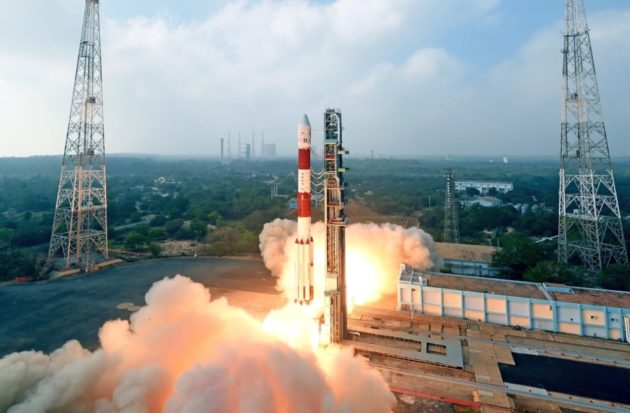(ISRO) PSLV-C58 flawlessly positions a satellite in its intended orbit, poised to monitor X-rays and study celestial phenomena.

Kicking off the new year with a triumph, the Indian Space Research Organisation (ISRO) achieved a milestone by successfully launching its inaugural X-ray Polarimeter Satellite (XPoSat). This advanced satellite is geared towards unraveling the mysteries of X-ray polarization and exploring cosmic phenomena, including black holes and neutron stars.
Soaring from the Satish Dhawan Space Centre in Sriharikota on Monday morning, ISRO’s renowned launch vehicle, PSLV-C58, seamlessly positioned the XPoSat into a meticulously calculated circular orbit of 650 km, completing the journey in a mere 21-minute flight.
Setting a remarkable precedent, the XPoSat stands as the world’s second mission of its kind, following NASA’s launch of the Imaging X-ray Polarimetry Explorer (IXPE) in 2021. The XPoSat encompasses two crucial payloads, namely the Indian X-ray Polarimeter (POLIX) and X-ray Spectroscopy and Timing (XSPECT), skillfully crafted by the adept teams at the Raman Research Institute and UR Rao Satellite Centre, both located in Bengaluru.
“On 1st January 2024 yet another successful mission of the PSLV has been accomplished. PSLV C58 has placed the primary satellite XPoSat in the desired orbit,” said ISRO Chairman S Somanath.
The deviation from the intended orbit is a mere 3 km, coupled with an inclination of only 0.001 degrees, showcasing exceptional orbital precision. Additionally, the satellite’s solar panel deployment has been executed seamlessly, ensuring optimal functionality in its cosmic mission.
“We’re just starting the year, and more launches are on the horizon. In 2024, Gaganyaan takes center stage with India’s inaugural human spaceflight program. After last year’s TV-D1 mission, anticipate two more test flights this year, paving the way for the unmanned mission of the Gaganyaan program.”
Somanath said there will be PSLV, GSLV, as well as its new SSLV launches this year.
“ISRO kicks off 2024 in style with the triumphant launch of PSLV-C58/XPoSat Mission. Proudly affiliated with the Department of Space, as Team ISRO achieves a series of successes, thanks to the hands-on support from PM Narendra Modi,” expressed Union Minister of State for the Department of Space, Dr. Jitendra Singh.
Following the injection of XPoSat into its designated orbit, the fourth stage of the launch vehicle underwent two additional firings, adjusting it to a 350-km orbit where it will serve as a versatile platform for experiments. Despite the option to leave the experiments in the same orbit as XPoSat, ISRO chose a responsible approach by bringing the fourth stage to a lower orbit, minimizing its orbital lifespan. This decision ensures responsible space management, preventing the creation of debris, with any remaining fuel being safely disposed of before the platform re-enters the atmosphere upon completion of its month-long mission life.
ISRO has now employed the PSLV Orbital Experimental Module (POEM) platform for the third time, showcasing advancements in space technologies. Notably, the payload includes a fuel cell power system crafted by ISRO’s Vikram Sarabhai Space Centre, serving as a crucial precursor to upcoming power systems intended for space stations. With India’s ambitious plan to establish a space station by 2035, these technological demonstrations mark pivotal steps toward the nation’s space exploration endeavors.
Among the experiments conducted on the PSLV Orbital Experimental Module (POEM), the Women Engineered Satellite (WESAT) takes the spotlight. Developed by the LBS Institute of Technology for Women, WESAT aims to explore the correlation between solar irradiance and the UV index. Additional experiments featured on the platform encompass a radiation shielding experiment, an amateur radio, three distinct propulsion systems by space start-ups, an inter-planetary dust count experiment by the Physical Research Laboratory, and a silicon-based high-energy cell, once again showcasing the innovative prowess of VSSC.
XPoSat is set to be India’s third space observatory, following the solar mission Aditya-L1 and AstroSat launched in 2015.
By studying how X-rays from space are polarized, XPoSat helps us understand the processes causing these emissions. This method gives us new ways to learn about space, going beyond just taking pictures. It lets scientists study how the light from space sources changes and explore the energy coming from celestial bodies.
